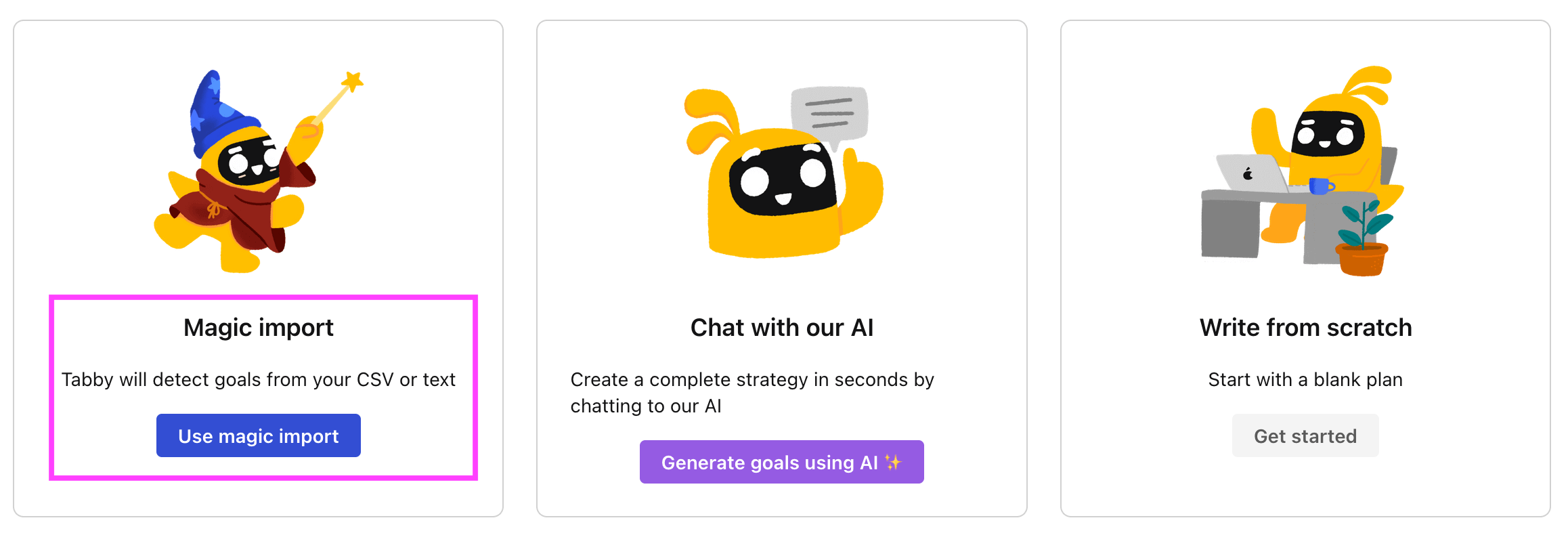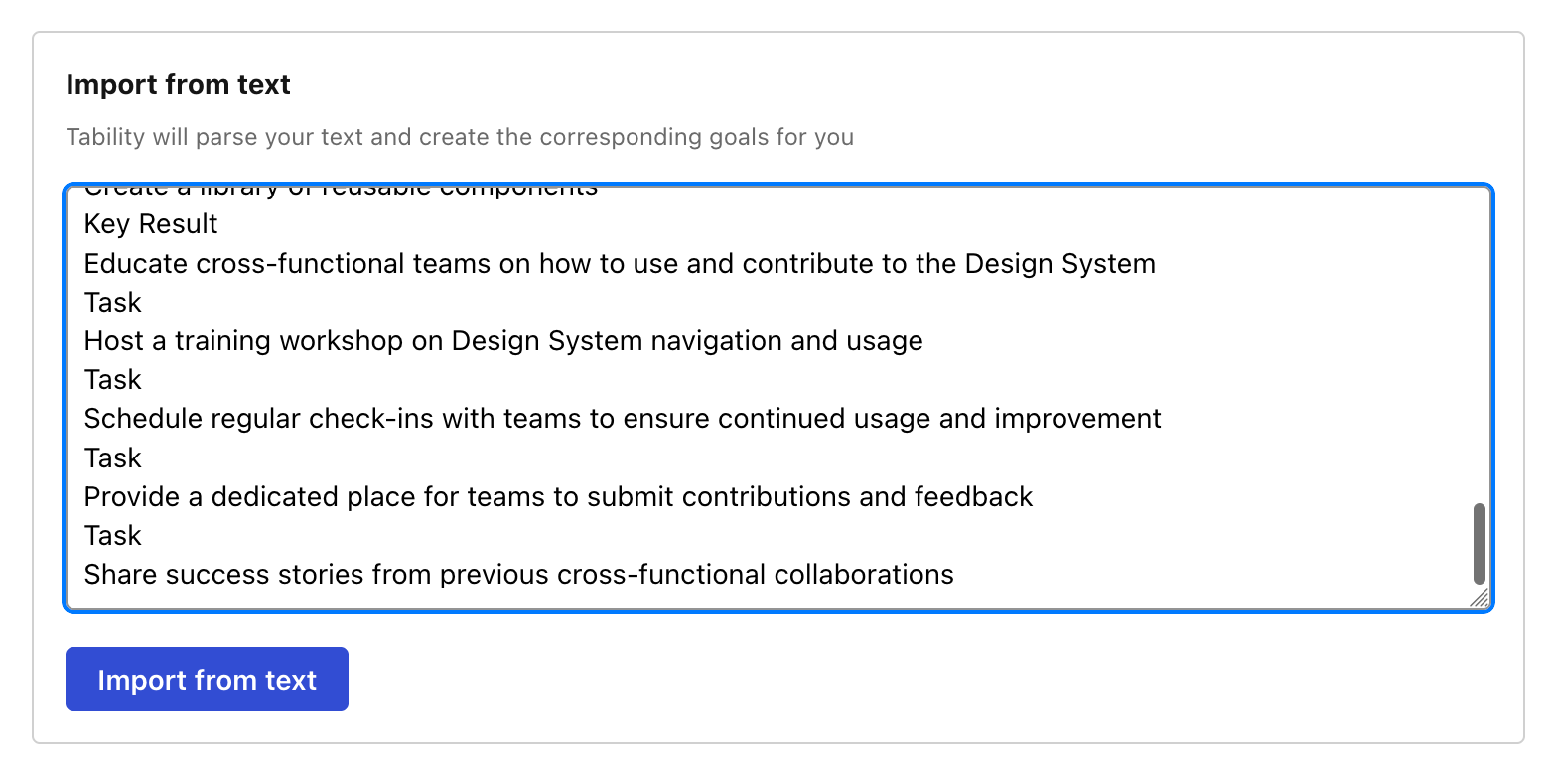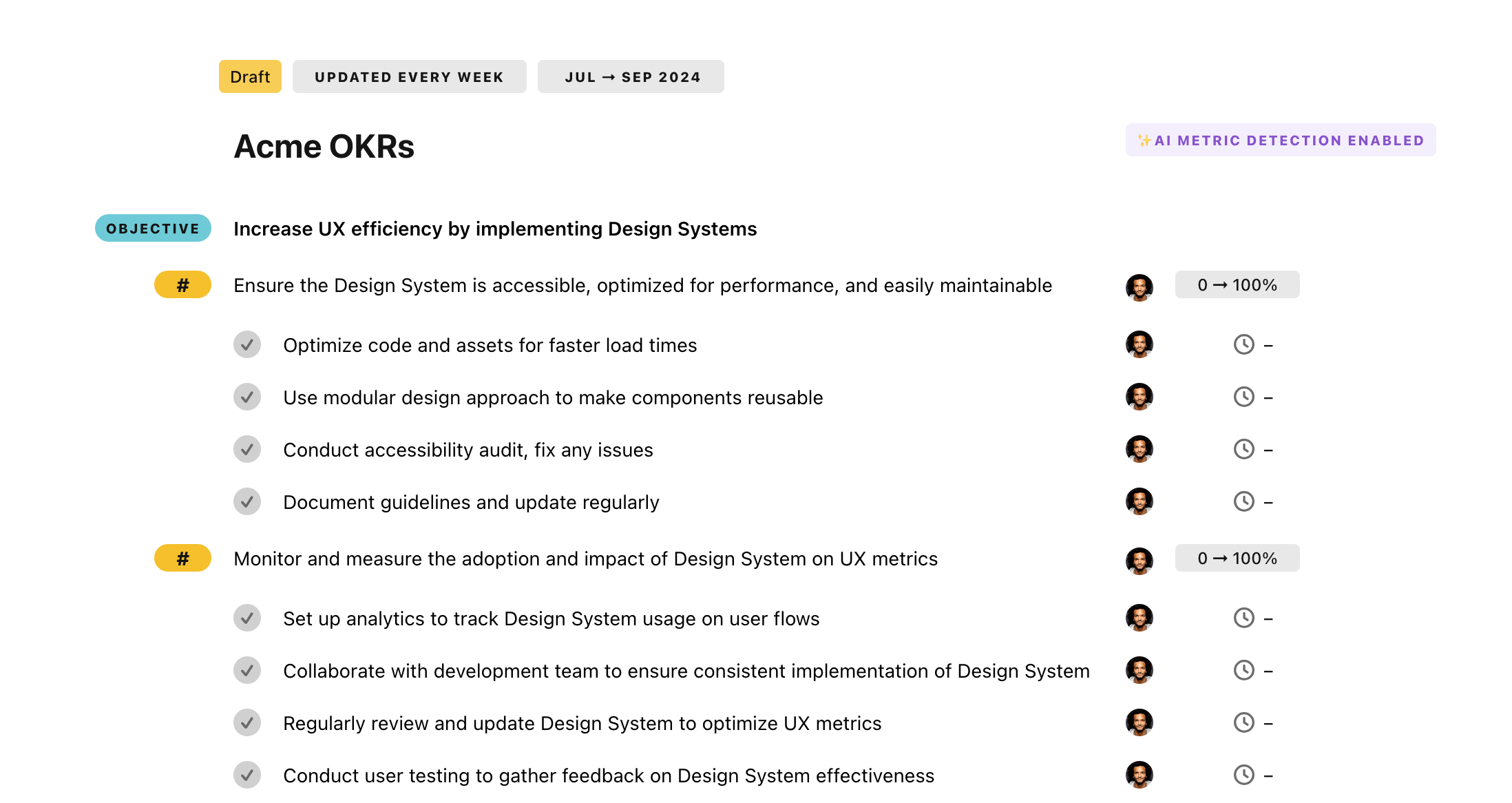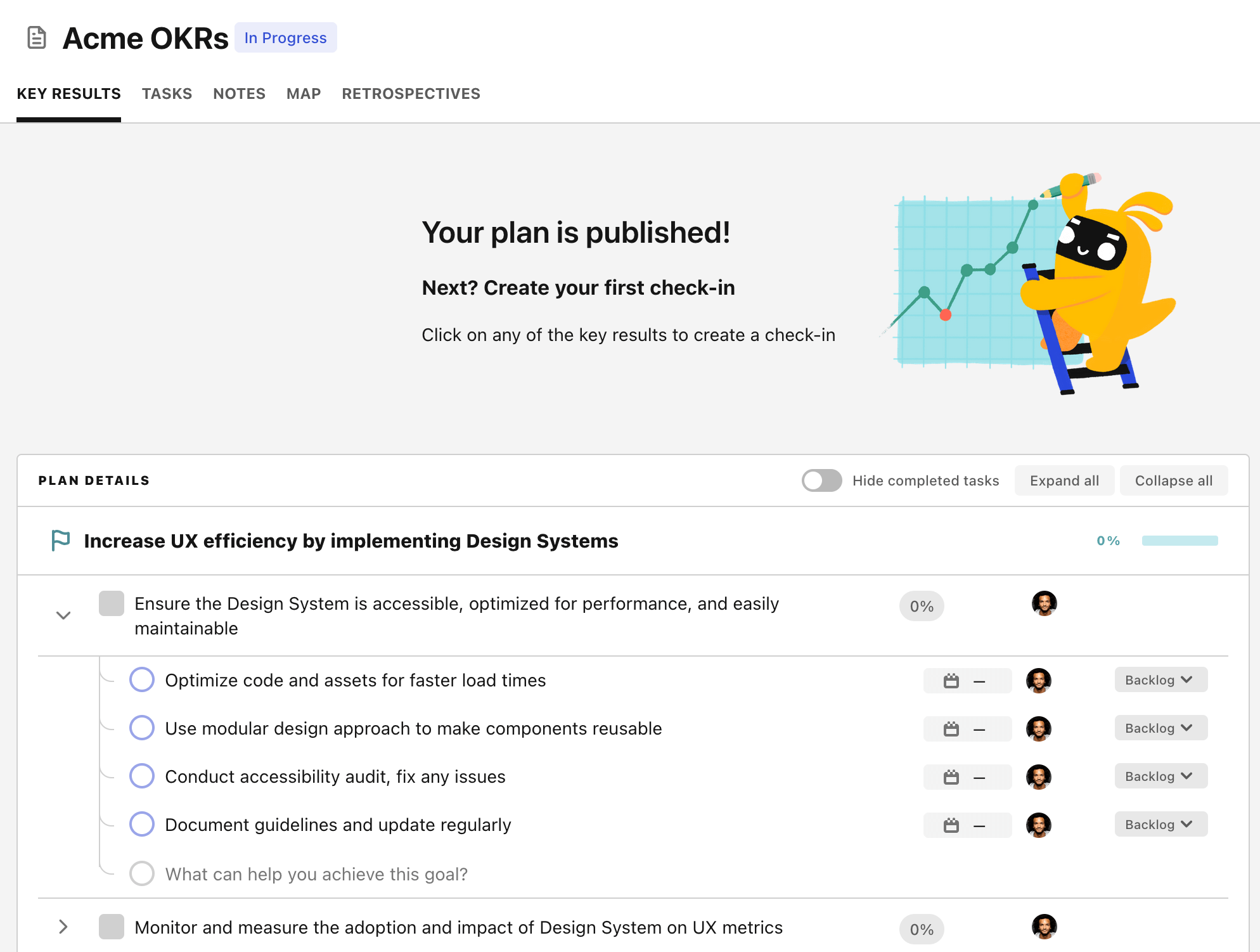OKR template to enhance website for increased Conversion Rate Optimization (CRO)
Your OKR template
The second primary stride towards achieving this objective is targeted at improving the website’s load speed by 30%. The idea is that a quicker site load speed will reduce bounce rates, as unnecessarily slow loading speed often frustrates users. To achieve this, a performance audit needs to be conducted on website elements to identify areas in need of optimization.
In addition to the effort to enhance responsiveness and reduce bounce rates, there is also a besoin to implement A/B testing on half of the landing pages. This will give substantial data that will be used to further improve the website’s effectiveness and usability, and in turn boost conversion rates.
Measuring the progress and success of these objectives will be done using a percentage scoring format, with each initiative starting from zero and the target at 100%. The initiatives strategically detail the steps and approach that will be taken to achieve each objective, showing the thoroughness and calculated approach to meeting this Okr's stated goals.
ObjectiveEnhance website for increased Conversion Rate Optimization (CRO)
KRIncrease CTA responsiveness by redesigning 20% of web pages for better engagement
Identify engagement elements for redesign
Implement and test website changes
Analyze current webpage design for needed improvements
KRImprove site load speed by 30% to reduce bounce rates
Conduct a performance audit on website elements
Optimize images and streamline design elements
Implement a reliable Content Delivery Network (CDN)
KRImplement A/B testing on 50% of landing pages to boost conversion rates
Monitor and analyze test results for conversion improvements
Develop different versions for selected pages
Identify 50% of landing pages for A/B testing
How to edit and track OKRs with Tability
You'll probably want to edit the examples in this post, and Tability is the perfect tool for it.
Tability is an AI-powered platform that helps teams set better goals, monitor execution, and get help to achieve their objectives faster.
With Tability you can:
- Use AI to draft a complete set of OKRs in seconds
- Connect your OKRs and team goals to your project
- Automate reporting with integrations and built-in dashboard
Instead of having to copy the content of the OKR examples in a doc or spreadsheet, you can use Tability’s magic importer to start using any of the examples in this page.
The import process can be done in seconds, allowing you to edit OKRs directly in a platform that knows how to manage and track goals.
Step 1. Sign up for a free Tability account
Go tohttps://tability.app/signup and create your account (it's free!)
Step 2. Create a plan
Follow the steps after your onboarding to create your first plan, you should get to a page that looks like the picture below.

Step 3. Use the magic importer
Click on Use magic import to open up the Magic Import modal.
Now, go back to the OKR examples, and click on Copy on the example that you’d like to use.

Paste the content in the text import section. Don’t worry about the formatting, Tability’s AI will be able to parse it!

Now, just click on Import from text and let the magic happen.

Once your example is in the plan editor, you will be able to:
- Edit the objectives, key results, and tasks
- Click on the target 0 → 100% to set better target
- Use the tips and the AI to refine your goals
Step 4. Publish your plan
Once you’re done editing, you can publish your plan to switch to the goal-tracking mode.

From there you will have access to all the features that will help you and your team save hours with OKR reporting.
- 10+ built-in dashboards to visualise progress on your goals
- Weekly reminders, data connectors, and smart notifications
- 9 views to map OKRs to strategic projects
- Strategy map to align teams at scale